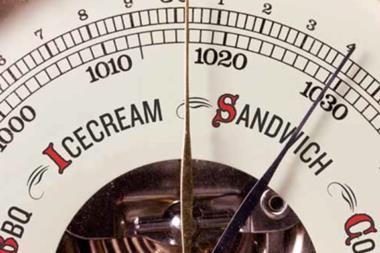● The tractor features advanced aerodynamics, with designers using ‘computational fluid dynamics’ - or CFD - analysis to optimise its styling. The unique shape equates to a 20% reduction in aerodynamic drag over the retailer’s existing Peterbilt Model 386. The position of the cab over the engine means the truck’s wheelbase is shortened. This results in reduced weight and greater manoeuvrability. Tom Topper, executive director of prototype services at Roush Engineering, says the design is “revolutionary and truly world class.”
● The futuristic vehicle is the result of collaboration between Walmart and various vendors, including Peterbilt, Roush Engineering and Great Dane Trailers. Although the prototype currently runs on diesel, its turbine is fuel-neutral - as a result it can run on compressed or liquid natural gas, biofuels or other fuels. There’s also an ‘electric vehicle mode’ for use in urban areas that allows the truck to operate on electric power alone until the battery charge drops to 50%.
● The truck is a ‘range-extending hybrid’ - essentially a synergy between electric trucks and series hybrids. The design of these vehicles reduces the energy storage size required for trucks to run on batteries alone. As the retailer has more RDCs located closer to built-up areas, the transit times of delivery vehicles have been significantly reduced. These shorter trips “reduce the vehicles’ average trip speed and create more opportunities to recover energy through regenerative braking,” according to Walmart.
● Its trailer offers a vast array of fuel-saving features. The body is built almost exclusively with carbon fibre, including one-piece carbon fibre panels for the roof and sidewalls. This saves nearly 4,000 pounds versus traditional trailer designs. Its convex nose also enhances aerodynamics while at the same time maintaining storage space inside the trailer. The trailer also includes a number of additional special features including: low-amperage LED lighting strips, composite trailer skirts, aerodynamic disc wheel coverings, a posi-lift suspension, and a one-piece, fibreglass-reinforced floor panel with a 16,000-pound forklift rating.
● The launch of the prototype is a key part of a pledge, made by Walmart in 2005, to double its fleet efficiency by 2015. As of last year, the retailer claims it had already achieved an 84% improvement in fleet efficiency over its 2005 baseline. It’s unclear how the MPG of the prototype stacks up against conventional trucks as the vehicle has yet to undergo full track testing. However, Walmart is confident the vehicle will help it to hit its environmental targets.
Sign in to comment on this article
Not logged in before? Register for FREE guest access today.
You will be able to:
- Read more stories
- Receive daily newsletters
- Comment on stories
Advert



















No comments yet